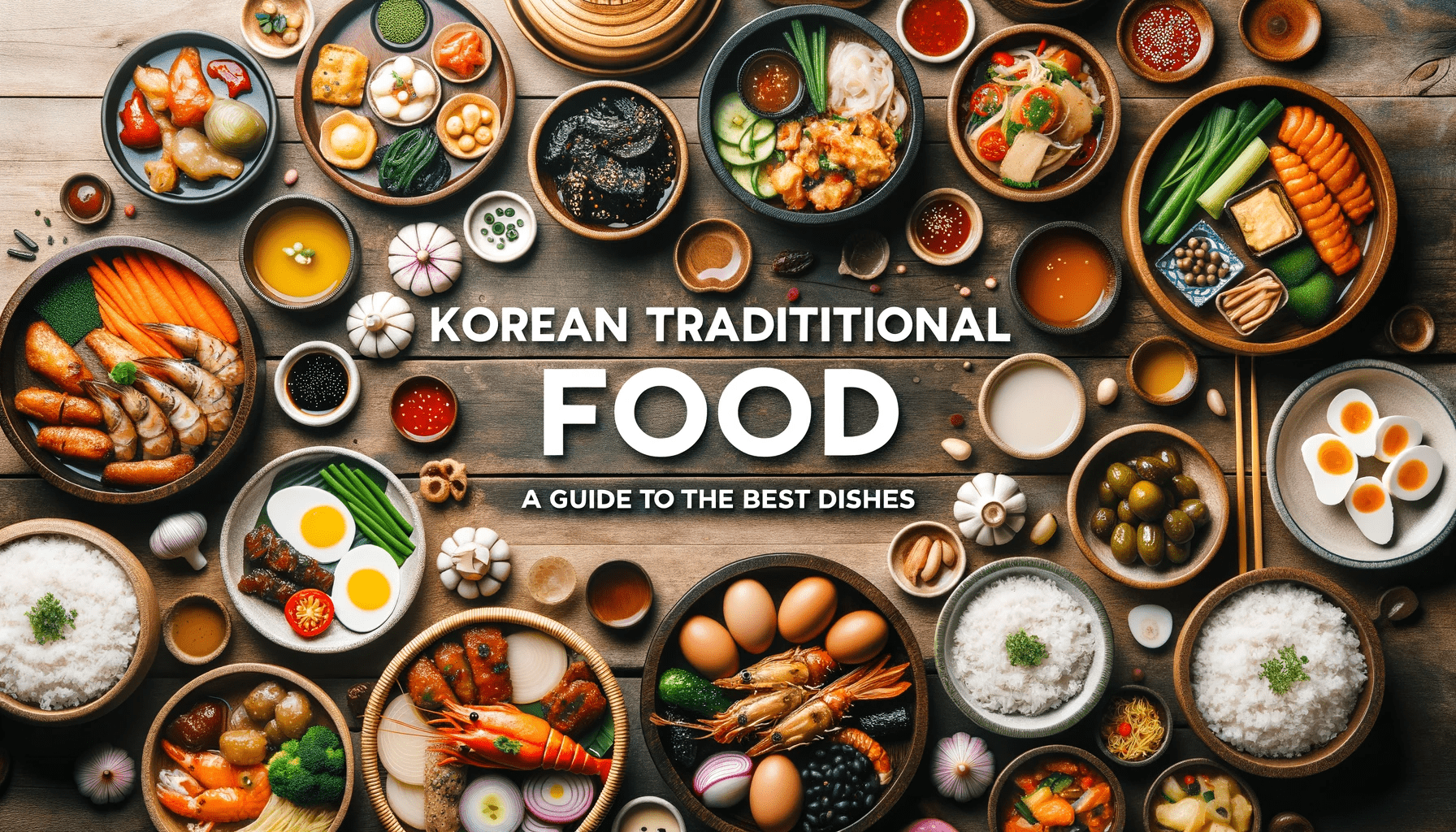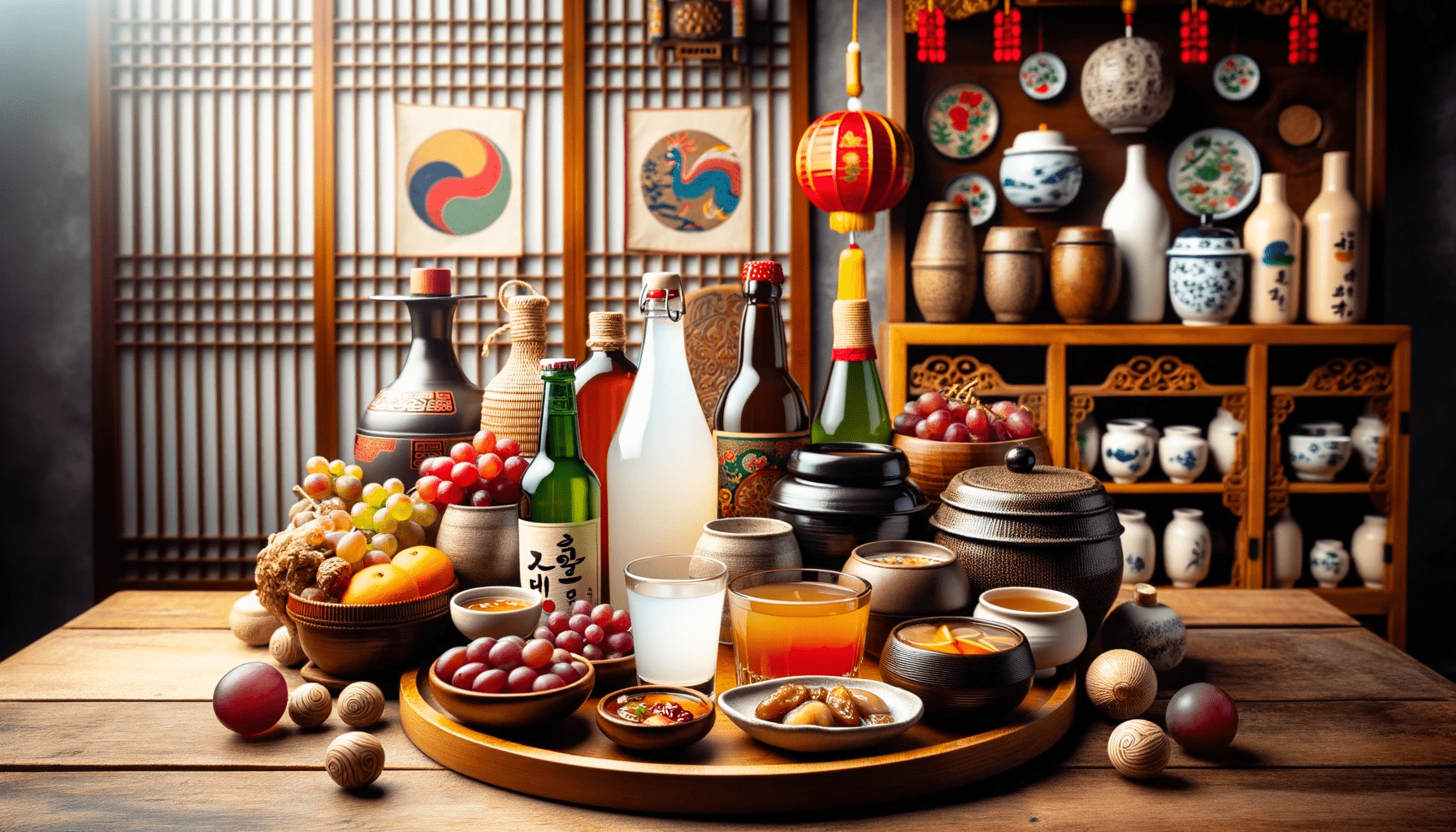Did you know that makgeolli, a traditional Korean rice wine, has a long and rich history?
In the article ‘Discover the Secrets of Makgeolli: Make, Buy, and Savor the Best Brands,’ we delve into the world of this unique beverage.
Learn how to make your own makgeolli at home, explore the benefits of homemade versus mass-produced options, and discover where to find the best brands.
Whether you’re a DIY enthusiast or a curious connoisseur, this article is your comprehensive guide to all things makgeolli.
Key Takeaways
- Making makgeolli at home is an easy process that requires basic ingredients and equipment.
- Homemade makgeolli has a better taste than mass-produced ones.
- Makgeolli can be used as a base for various cocktails, allowing for experimentation with different flavors.
- Makgeolli is a relatively low-calorie alcoholic beverage that provides health benefits and boosts metabolism.
The History of Makgeolli: A Traditional Korean Rice Wine
The history of makgeolli traces back centuries, making it a significant cultural and culinary tradition in Korea. This traditional Korean rice wine has been brewed using traditional techniques passed down through generations. Makgeolli holds great cultural significance, often being enjoyed during celebrations and festivals.
Its production involves fermenting rice and wheat with nuruk, a traditional Korean fermentation starter. The result is a cloudy, creamy beverage with a tangy flavor and a low alcohol content.
Beyond its cultural importance, makgeolli also offers health benefits. It is a probiotic beverage, containing beneficial bacteria that support gut health and digestion. Additionally, research suggests that makgeolli’s probiotic properties may have potential effects on cancer prevention.
With its rich history and health benefits, makgeolli continues to be cherished as a beloved Korean drink.
Easy Steps to Make Your Own Makgeolli at Home
One can easily make their own makgeolli at home by following a few simple steps.
Traditionally, makgeolli is made using wheat yeast (nuruk), but there are alternative ingredients available for fermentation. To make makgeolli without wheat yeast, one can use a combination of rice, dried yeast, and other sweeteners like honey or corn syrup.
The process begins by washing and soaking the rice for a couple of hours, followed by cooking it with water. After cooling, the rice is mixed with the dried yeast and sweeteners in a pot or jar. The mixture is left to ferment for 3-5 days, with regular stirring.
Straining the fermented mixture is recommended before enjoying the homemade makgeolli. With these alternative ingredients, anyone can create their own delicious and authentic makgeolli at home.
Fermentation Tips: How to Achieve the Best Homemade Makgeolli
Achieving the best homemade Makgeolli requires careful attention to fermentation techniques and a deep understanding of the optimal conditions for yeast activation and sugar conversion. To create a truly exceptional rice wine, traditional fermentation methods should be employed.
Additionally, experimenting with alternative ingredients can yield unique and flavorful variations of this traditional Korean beverage.
Here are three key considerations for making the best homemade Makgeolli:
-
Traditional Fermentation Methods: Following the time-tested techniques used in traditional Korean rice wine production can enhance the flavor and quality of Makgeolli.
-
Yeast Activation: Ensuring that the yeast is activated properly is crucial for successful fermentation. This can be achieved by maintaining the ideal temperature and providing the necessary nutrients for yeast growth.
-
Alternative Ingredients: While rice is the traditional base for Makgeolli, exploring alternative grains such as barley or wheat can introduce new flavors and textures to the final product.
Enhancing the Flavor: Traditional Korean Equipment for Making Makgeolli
To deepen the flavor of homemade Makgeolli, consider incorporating traditional Korean equipment, such as stoneware onggi or glass jars, which can enhance the fermentation process. These traditional vessels have been used for centuries and are known to impart unique flavors to the rice wine. Compared to modern methods using plastic containers or metal containers, traditional equipment allows for better airflow and temperature control during fermentation. This results in a more complex and flavorful Makgeolli.
Using traditional equipment also honors the rich history and cultural heritage of Makgeolli making in Korea. The following table illustrates the benefits of using traditional equipment:
| Traditional Equipment | Modern Equipment |
|---|---|
| Stoneware onggi | Plastic containers |
| Glass jars | Metal containers |
| Allows for better airflow and temperature control | May affect the flavor of Makgeolli |
| Enhances the fermentation process | May not provide the same depth of flavor |
Delicious Makgeolli Cocktails to Try
While there are many traditional ways to enjoy Makgeolli, exploring the world of delicious Makgeolli cocktails is a refreshing and innovative way to savor this traditional Korean rice wine. Here are three unique Makgeolli cocktail recipes to try:
-
Makgeolli and Tonic: A delightful blend of cherries, Makgeolli, and tonic water, creating a fruity and bubbly concoction.
-
Makgeolli Mimosa: A twist on the classic Mimosa, this cocktail combines rice wine, orange juice, and champagne, resulting in a tangy and effervescent drink.
-
Daiquiri Makgeolli: This cocktail blends strawberries, frozen Makgeolli, sugar, rum, and lime juice, creating a sweet and tart beverage with a hint of rum.
Not only do these cocktails offer a unique twist on traditional Makgeolli, but they also showcase the versatility and adaptability of this rice wine. Additionally, the fermentation process of Makgeolli provides health benefits such as probiotics, vitamins, and antioxidants, making these cocktails not only delicious but also good for you.
Exploring the Different Flavors of Makgeolli for Unique Cocktails
By experimenting with various types of makgeolli and utilizing their distinct flavors, mixologists can create unique and enticing cocktails.
Makgeolli, a traditional Korean rice wine, offers a wide range of flavors that can be blended with other ingredients to create innovative and refreshing drinks. From fruity blends like makgeolli and tonic with blended cherries, to classic cocktails like the makgeolli mimosa with orange juice and champagne, the possibilities are endless.
In addition to the delightful taste, makgeolli also offers health benefits. It is a probiotic beverage due to fermentation, containing vitamins, fiber, acids, lactic acid bacteria, inositol, and choline. It provides a boost to metabolism and is relatively low in calories compared to other alcoholic beverages.
Unveiling the Alcohol Content and Health Benefits of Makgeolli
The alcohol content and health benefits of makgeolli are important factors to consider when enjoying this traditional Korean rice wine.
Makgeolli has an average alcohol percentage of 6-8%, making it a relatively low-alcohol beverage.
Drinking makgeolli in moderation can provide various health benefits, such as boosting metabolism, improving the immune system, and benefiting skin conditions, blood circulation, and metabolism.
Making homemade makgeolli is a simple process that requires rice, wheat yeast (nuruk), sugar, dried yeast, and water. Fermentation takes around 3-5 days, with regular stirring.
Homemade makgeolli is known to have a better taste compared to mass-produced ones.
It is important to note that while makgeolli has its benefits, moderation is key to fully enjoy and experience its positive effects.
Makgeolli: A Low-Calorie Alcoholic Beverage Option
Makgeolli presents a promising alternative for those seeking a low-calorie alcoholic beverage option. Originating from Korea, this traditional rice wine has gained popularity worldwide due to its unique taste and health benefits. With the rise of makgeolli in international markets, more and more people are discovering its appeal as a healthy alternative to traditional rice wine.
Makgeolli is a probiotic product that undergoes fermentation, resulting in a low alcohol content of 6-8%. This makes it a lighter choice compared to wine or champagne. Additionally, makgeolli contains vitamins, fiber, acids, lactic acid bacteria, inositol, and choline, providing various health benefits and boosting metabolism.
The growing demand for low-calorie alcoholic beverages has contributed to the increasing popularity of makgeolli. With only around 350 calories per bottle, makgeolli is relatively low in calories compared to other alcoholic beverages. This makes it an attractive option for those looking to indulge in a drink without compromising their calorie intake.
As the trend of healthier drinking choices continues to grow, makgeolli is poised to become a staple in the international beverage market. Its unique flavor, health benefits, and low-calorie content make it an appealing choice for those seeking a refreshing and guilt-free alcoholic beverage option.
The Potential Health Benefits of Makgeolli
Recent studies have shown promising evidence of the potential health benefits of consuming makgeolli, including its positive effects on cancer prevention, immune system enhancement, and promotion of healthy skin, blood circulation, and metabolism.
Makgeolli, a traditional Korean rice wine, has not only cultural significance but also potential health benefits that are worth exploring.
Cancer prevention: Makgeolli contains antioxidants that help combat free radicals and reduce the risk of cancer.
Immune system enhancement: The probiotics and beneficial bacteria present in makgeolli can strengthen the immune system, promoting overall health and well-being.
Healthy skin, blood circulation, and metabolism: The vitamins, fiber, and lactic acid bacteria found in makgeolli contribute to improving skin conditions, enhancing blood circulation, and boosting metabolism.
With its rich history and potential health benefits, makgeolli is not just a cultural icon but also a beverage that can support a healthy lifestyle.
Where to Buy Makgeolli Online: Easy and Convenient Options
When searching for a convenient option to purchase makgeolli online, one can explore websites such as Nanuko, Leisers, and Geonbae. These platforms offer a wide range of makgeolli brands and flavors, providing an easy and convenient way to satisfy one’s craving for this traditional Korean rice wine. Additionally, these websites often feature recipes for making homemade makgeolli, allowing enthusiasts to create their own unique flavors at home. For those who have already purchased makgeolli, it is important to know how to properly store it to maintain its quality and taste. Makgeolli should be stored in a cool and dark place, preferably in the refrigerator, to slow down the fermentation process and prevent spoilage. By following these guidelines, one can enjoy the delightful taste of makgeolli anytime they desire.
| Website | Makgeolli Brands | Makgeolli Flavors |
|---|---|---|
| Nanuko | Seoul Makgeolli, Gyeongju Beopju, 옛날 (Old Days) | Banana, Peach |
| Leisers | Gapyeong Pine Nut, Jinro Makgeolli | Chestnut |
| Geonbae | Kooksoondang Makgeolli, Boksundoga, Soola Makgeolli | – |
Discovering Makgeolli in Korea: Supermarkets, Convenience Stores, and More
One of the main attractions for makgeolli enthusiasts in Korea is the wide variety of makgeolli brands available at supermarkets, convenience stores, and other local establishments. When it comes to buying makgeolli in Korea, there are two main options to consider: convenience stores and supermarkets.
-
Convenience Store: Convenience stores in Korea offer a convenient and accessible option for purchasing makgeolli. They usually have a selection of popular commercial brands at affordable prices.
-
Supermarket: Supermarkets, on the other hand, provide a larger selection of makgeolli brands, including both commercial and artisan varieties. They often have a dedicated section for rice wines, allowing customers to explore different types of makgeolli and choose according to their preferences.
Exploring the different types of makgeolli is another exciting aspect for enthusiasts. Home brew makgeolli offers a unique and personalized experience, as it can be made with traditional methods and ingredients. On the other hand, artisan makgeolli, crafted by professional brewers, showcases the expertise and creativity of the makers. Whether you prefer the hands-on approach of home brewing or the expertly crafted flavors of artisan makgeolli, there are options to suit every taste.
Must-Try Makgeolli Brands: From Traditional to Artisanal
What are some must-try makgeolli brands, ranging from traditional to artisanal, that enthusiasts should explore? When it comes to the world of makgeolli, there is a wide range of brands and flavors to choose from. From the traditional and time-honored recipes to the modern and innovative twists, each brand offers a unique taste and experience. To help you navigate through the vast options, here are some makgeolli brands that have received positive reviews from enthusiasts:
| Traditional Makgeolli Brands | Artisanal Makgeolli Brands |
|---|---|
| Gyeongju Beopju | Boksundoga |
| 옛날 (Old Days) | Soola Makgeolli |
| Gapyeong Pine Nut |
These brands showcase the diversity of makgeolli, with traditional options that stay true to the classic recipes and artisanal options that push the boundaries of flavor and technique. Whether you prefer the nostalgic taste of Gyeongju Beopju or the innovative creations of Boksundoga, exploring different makgeolli brands is a delightful journey into the world of Korean rice wine.
Popular Fruit Flavored Makgeolli: A Twist on the Traditional
Exploring the market for popular fruit-flavored makgeolli reveals a delightful twist on the traditional rice wine, with flavors like banana and peach adding a refreshing dimension to this beloved Korean beverage. The rise of craft makgeolli has brought about a new wave of small batch producers who are experimenting with different fruit flavors to create unique and exciting variations of this traditional drink.
Here are three key points to consider:
-
A Refreshing Twist on Tradition: Fruit-flavored makgeolli offers a modern take on the classic rice wine, infusing it with vibrant and natural flavors that appeal to a wide range of tastes.
-
The Rise of Craft Makgeolli: Small batch producers are leading the charge in creating innovative and high-quality fruit-flavored makgeolli, using locally sourced ingredients and traditional brewing techniques.
-
Exploring Small Batch Producers: Delving into the world of craft makgeolli allows enthusiasts to discover hidden gems and support independent producers who are passionate about preserving the heritage of this ancient beverage.
With its popular fruit flavors and the rise of craft makgeolli, there has never been a better time to explore the diverse and exciting world of this refreshing twist on tradition.
Exploring Supermarket and Artisan Makgeolli Brands
The selection of supermarket and artisan makgeolli brands offers a wide range of options for enthusiasts to explore and savor.
When it comes to taste and quality, there is a noticeable difference between these two categories. Supermarket makgeolli brands are more widely available and affordable, making them accessible to a larger audience. These brands often have a consistent flavor profile and are produced on a larger scale.
On the other hand, artisan makgeolli brands are crafted with more attention to detail and traditional methods. These brands often prioritize quality over quantity and offer unique flavors and brewing techniques.
However, finding makgeolli abroad can be challenging, as it is not as readily available as other alcoholic beverages. Online platforms and specialty stores catering to Korean or Asian products may offer a selection of makgeolli for international customers to explore.
Frequently Asked Questions
Can I Make Makgeolli Using Regular Yeast Instead of Wheat Yeast?
Yes, it is possible to make makgeolli using regular yeast instead of wheat yeast. However, using wheat yeast is recommended as it provides a traditional flavor. Experimenting with different types of yeast can result in unique flavors.
How Long Does It Take for Makgeolli to Ferment?
The fermentation process of makgeolli typically takes 3-5 days. However, the fermentation time can be influenced by factors such as temperature. Lower temperatures can slow down fermentation, while higher temperatures can speed it up.
What Are Some Traditional Korean Equipment Options for Making Makgeolli?
Traditional Korean equipment options for making makgeolli include stoneware onggi or glass jars. These options are recommended for their ability to enhance the flavor of the rice wine. Additionally, cheese cloth and strainers can be used for straining.
Are There Any Specific Techniques or Tips for Enhancing the Flavor of Homemade Makgeolli?
Enhancing the flavor of homemade makgeolli can be achieved through various techniques and tips. Some include using traditional Korean equipment, such as stoneware onggi or glass jars, and straining the rice wine with a cheese cloth and strainer. Experimenting with different types of makgeolli can also result in unique and flavorful variations.
What Are Some Popular Fruit Flavors of Makgeolli?
Popular fruit flavors of makgeolli include banana, peach, and chestnut, offering unique fruit-infused variations of this traditional Korean rice wine. These flavors add a delightful twist to the classic taste of makgeolli, enhancing the overall drinking experience.
Conclusion
In conclusion, the article ‘Discover the Secrets of Makgeolli: Make, Buy, and Savor the Best Brands’ provides a comprehensive guide to the world of traditional Korean rice wine.
From learning how to make your own at home to exploring the best brands available on the market, readers are equipped with the knowledge and resources to fully immerse themselves in the makgeolli experience.
Whether you’re a DIY enthusiast or prefer to purchase ready-made options, this article has something for everyone to enjoy the unique flavors and cultural significance of makgeolli.






0 Comments